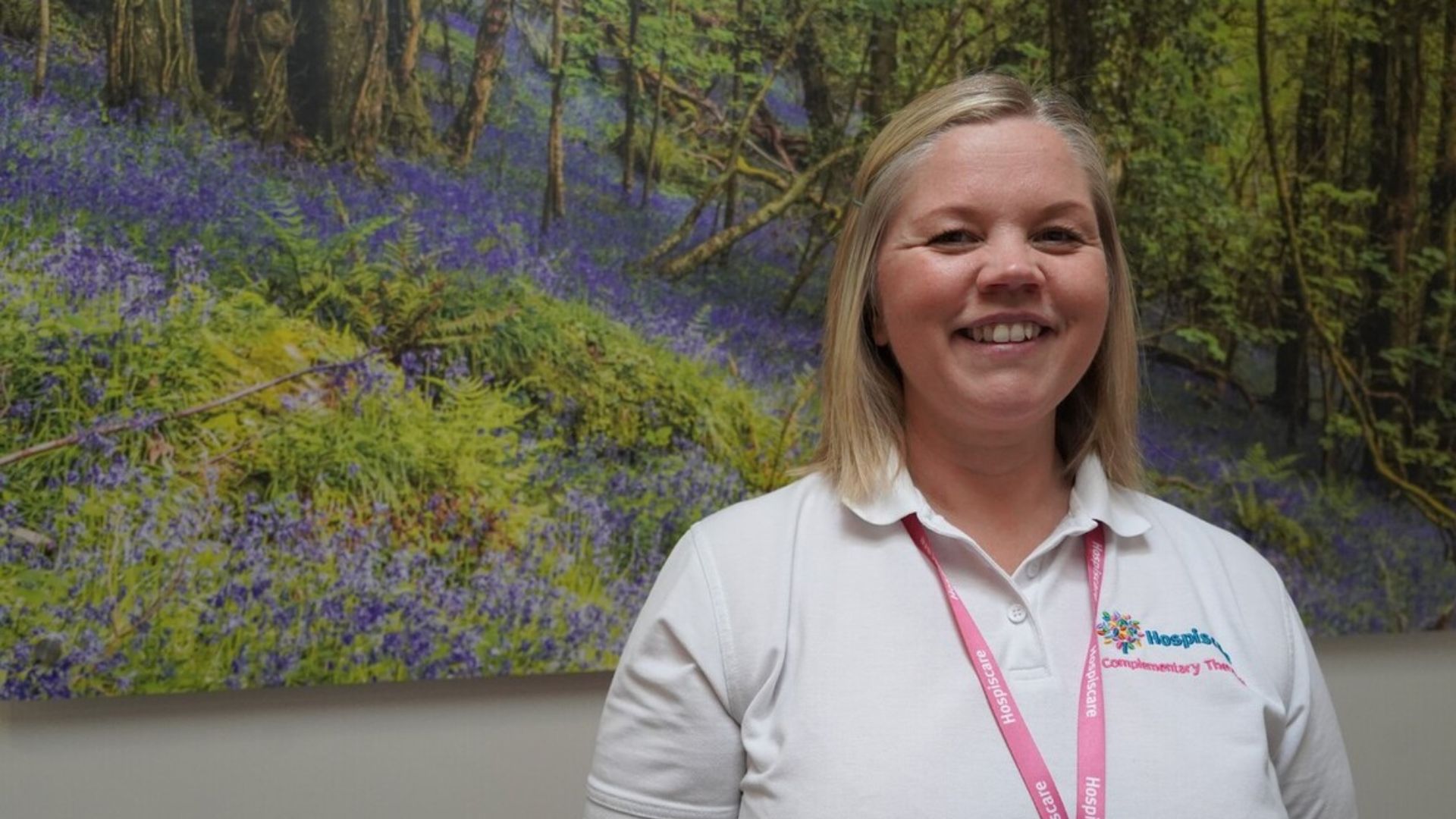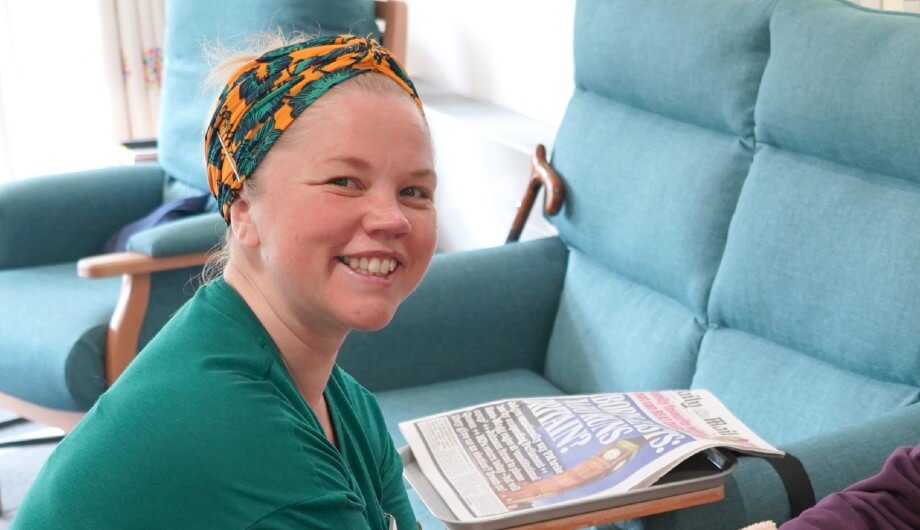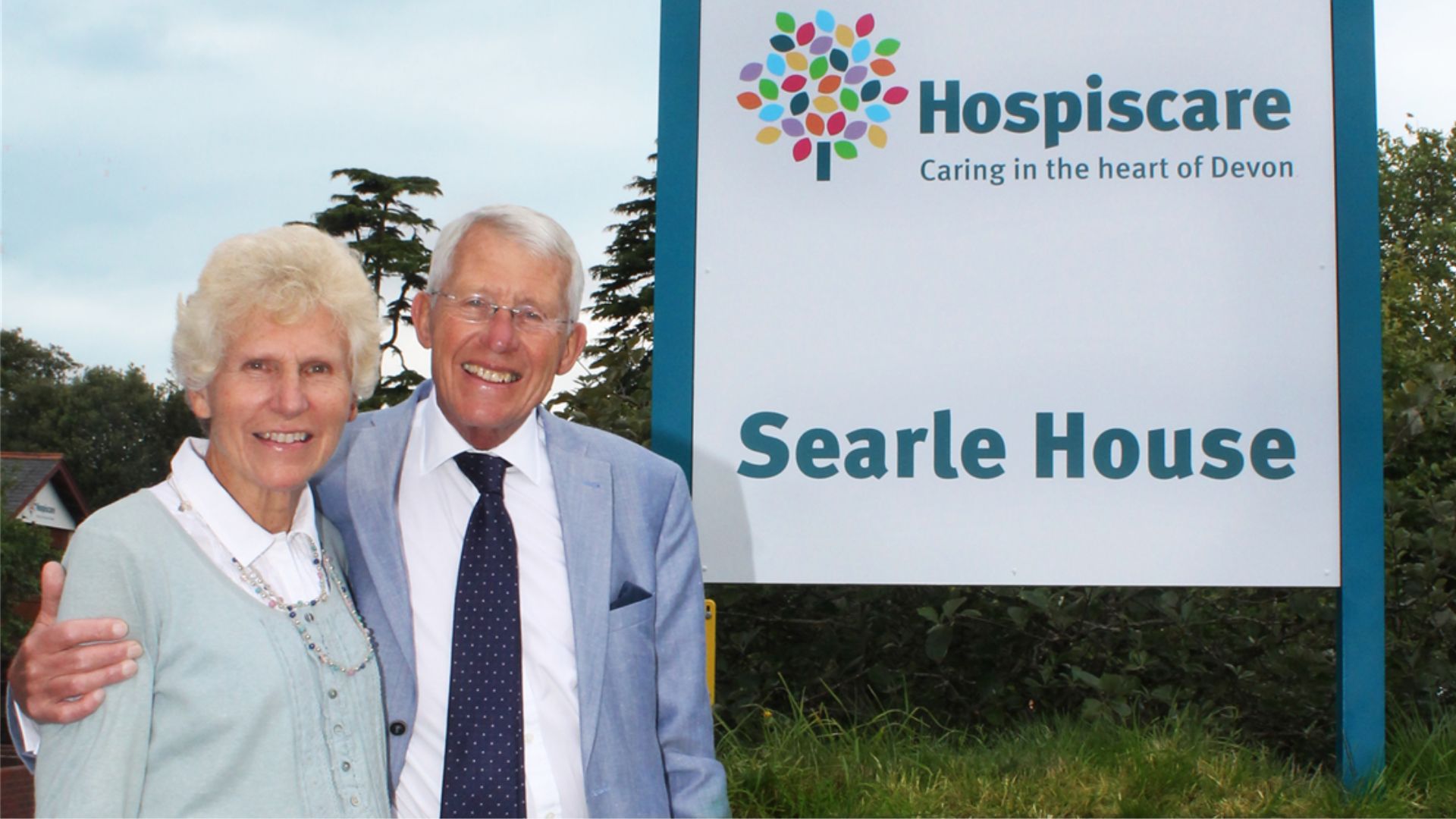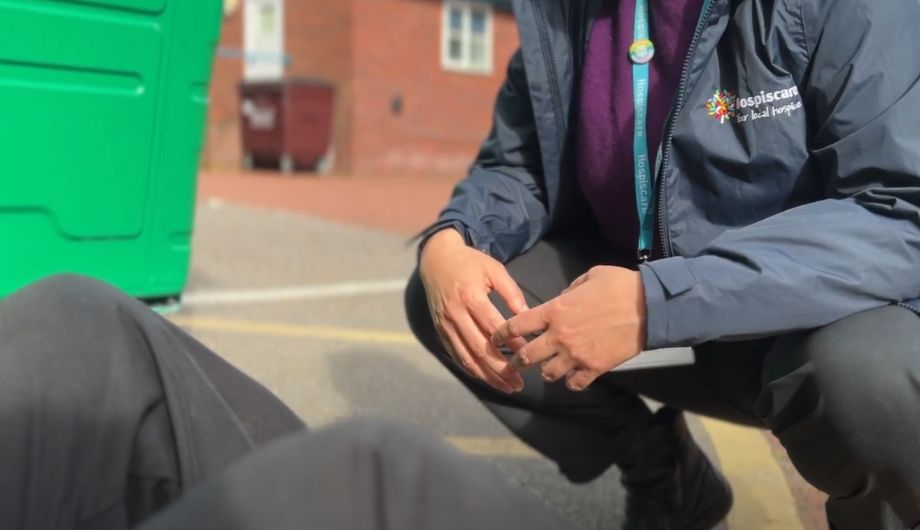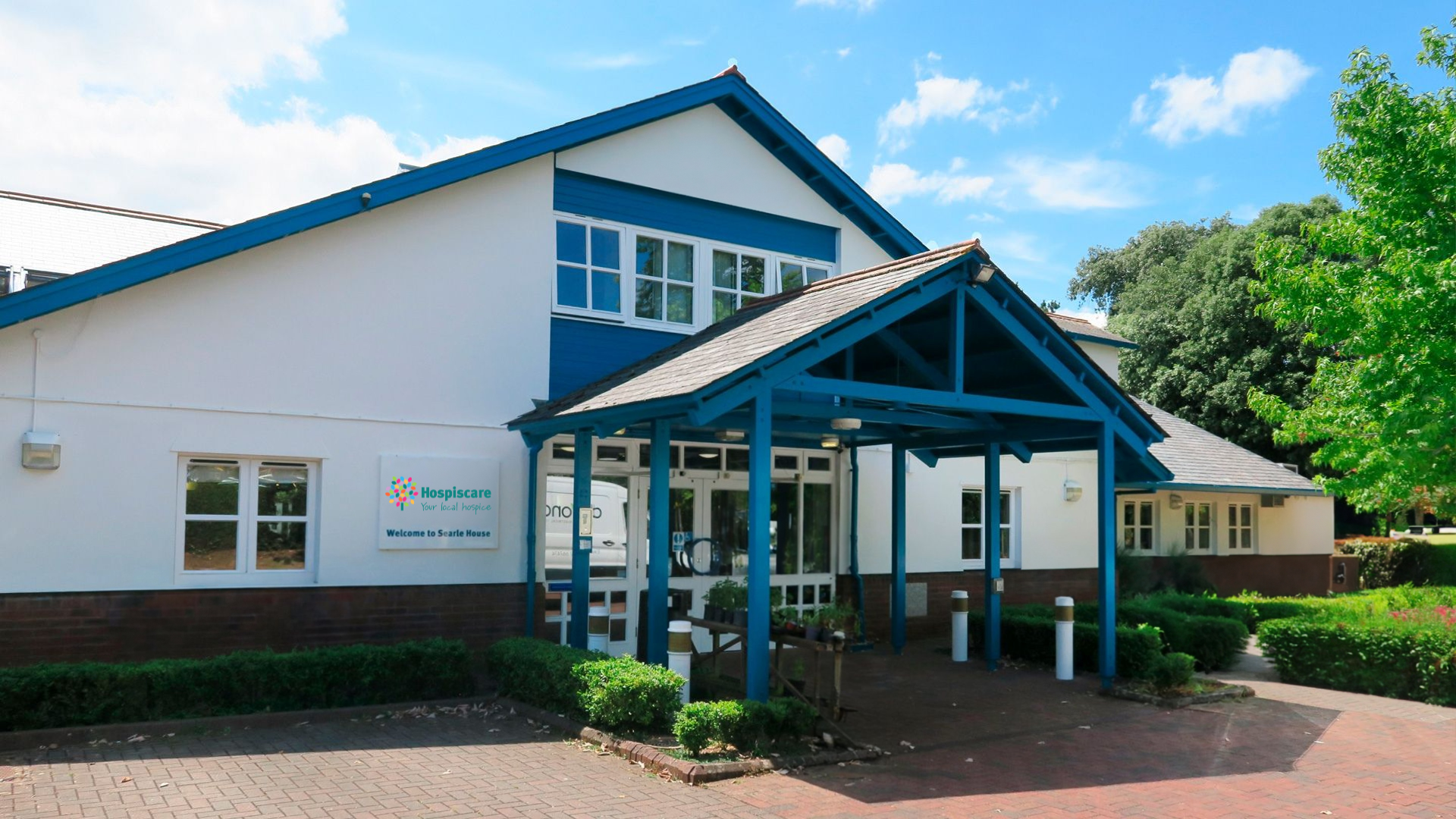What role does complementary therapy play at Hospiscare?
Complementary therapy is used alongside medication to ease pain, aid relaxation or simply to help people feel like themselves.
We use a very gentle type of massage to help relieve muscle tension and promote relaxation. Reflexology also uses massage techniques, but just on the feet. Certain points on the feet correspond to different parts of the body, so reflexology can help with symptoms like insomnia, constipation, restless legs and neuropathic pain.
Reiki can be either a hands-off or hands-on treatment, and is often done alongside music and guided relaxation. It’s about rebalancing the energy system and creating a sense of peace and
calm. We also offer relaxation therapies such as guided visualisation and breathing techniques, which can help with anxiety and panic attacks.
Whichever therapy we’re using, the main goal is for the patient to feel calmer, more relaxed and more in control. That then eases the patient’s sense of pain. So complementary therapy can
improve people’s overall experience, not just the specific symptoms that we’re targeting.
What does a typical work day look like?
It’s quite varied, which I love. I have the help of five fantastic complementary therapy volunteers. Between us, we try to cover the ward five days a week, up to around 8pm. I also visit patients and carers at home, and we’re planning to start offering complementary therapies through our outpatient clinics too. So I’m darting about here, there and everywhere!
Do you have any relaxation techniques or ways of reducing anxiety and stress that readers can use at home?
When we’re stressed, our breathing becomes quick and shallow, and our mind feels very overwhelmed. That causes physical effects like muscle tension. Breathing techniques can really help. For example, breathing in through your nose for the count of four, holding your breath for the count of four, and then breathing out through your mouth for the count of four.
Another technique is grounding. Look around the room and notice five things that you can see, four things that you can hear, three things that you can touch, two things that you can smell and one thing that you can taste.
These techniques are relatively quick to do, so you just need to find little pockets of time. You could try them while you’re waiting for the kettle to boil, for example.

